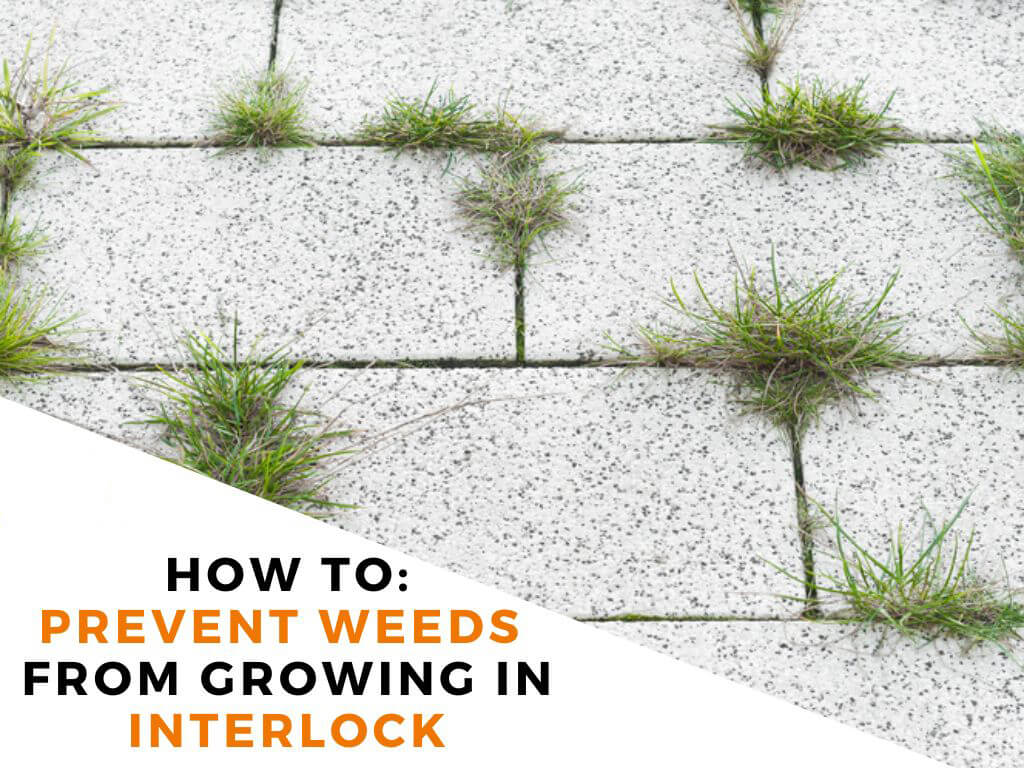We’ve likely all dealt with interlock weeds at some point, whether they end up in our driveways, patios, walkways, pools, or steps. The best way to prevent the pesky weeds that pop up in the cracks in your interlocking paving stones is to have the project installed correctly in the first place, using high-grade materials, probably by a professional. After installation, regular maintenance is a light chore that will head off many problems. But, if you’ve got a problem with your interlocking hardscape, like weeds, it probably means one of these two things didn’t happen.
Prevention is the Best Medicine
Polymeric sand, versus regular landscaping sand, should be used to install or repair interlocking pavers. Polymeric sand is a mix that includes chemical binders and additives (each manufacturer’s recipe is different). Its composition makes it ideal for filling the joints between slabs, natural stones, interlocking pavers, etc. It resists erosion caused by water, frost, and wind and deters weeds and insects. It is also more stable and stays in place better than regular sand. Upon the application of water, it hardens to bind the interlocking pavers together.
But just using Polymeric sand isn’t enough. There are a lot of MUST DO and MUST NOT DO items to ensure the best installation. One of these is to add the Polymeric sand, use a vibratory plate tamper to optimize its settling, and then add it a second time. This prevents future gaps—where those pesky weeds occur. It is also critical to use high-grade Polymeric sand. The benefits you gain from the lowest grade of Polymeric sand may last about one year. The benefits you gain from the highest quality of Polymeric sand can last up to fifteen years. This is one of those cases where spending a little more upfront will save you in the long run.
Offense is the Best Defense
Even when you’ve had a professional installation, maintaining your interlocking paving stones will ensure you optimize their lifespan and aesthetic appeal.
Regularly clean your interlock of dirt, debris, and weeds with a soft bristle brush. Using your brush with dish soap and water usually works if you have stubborn stains.
When a more intensive cleaning is required, use a power washer to clean the stone and remove loose sand. (Note: Check the specifications for your stone. Some stones won’t tolerate a high-pressure setting.)
Once the stones are clean and dry, add the Polymeric sand. Occasionally, some stones need to be removed, re-leveled, and reset. Once done, add the Polymeric sand.
After the pavers have been cleaned and repaired, you may want to seal your pavers. This can protect your interlock from stains caused by oil, dirt, and salt as well as help to maintain the interlock’s original colour.
When Repair is Necessary
If you have a weed problem in your interlock, there are two choices to fix it depending on the size of the weeds.
Weeds get into your interlock, asphalt, concrete, paver slabs, etc., from the top. In interlock, gaps created from erosion, wear and tear, or settling, accumulate earth in those gaps. Air-born seeds find their way to the dirt, and weeds start to grow. If the weeds are small, a high-pressure washer can clean out the weeds before adding Polymeric sand.
If the weeds get a stronger foothold, the interlock will have to be removed, cleaned, and reinstalled. How well determines whether you have a problem again in the future. Done correctly, it will give you a lasting solution.
A little bit of maintenance along the way will most likely prevent the need for a repair. But, if you need work done by a professional, whether fixing an existing weed problem or getting a new installation, do your due diligence and find a licensed paving professional that will do the job right.
If you have any other questions about your interlocking, please feel free to call us!

